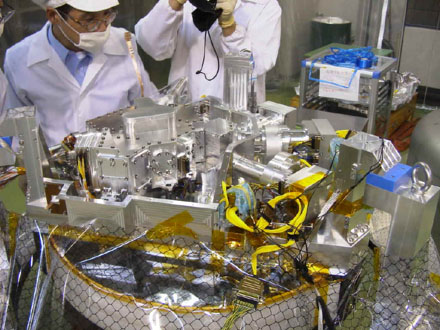AKARI(ASTRO-F) Topics before the Launch
ASTRO-F combined with the M-V-8 rocket (February 2006)
Preparation of the ASTRO-F launch is progressing on schedule at JAXA's Uchinoura Space Center. The satellite has completed standalone tests and was connected onto the 3rd stage of the M-V-8 rocket. Function tests after the connection was also went successfully. The satellite is covered by the nose fairing and will be mounted on the 1st & 2nd stage of the rocket.
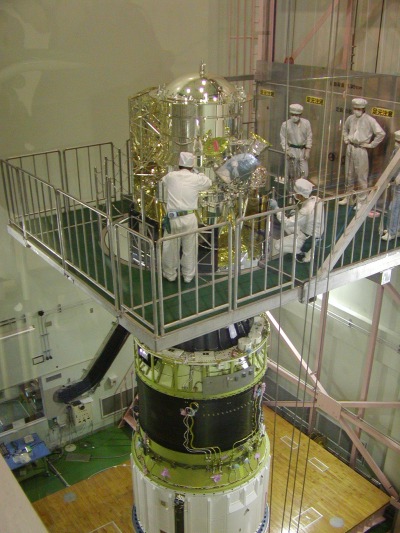
ASTRO-F Fligth Operation started (January 2006)
We have completed ASTRO-F integration tests in the ISAS Sagamihara campus, and shipped the spacecraft to the launch site, JAXA's Uchinoura Space Center (USC) in Kagoshima prefecture. The flight operation of ASTRO-F started on December 27th. On the 29th, we made the first functional tests of the satellite using the ground facilities in USC, and confirmed that the satellite is in healthy status.
Throughout the new year's days we carried out maintenance works of the mechanical cooler system and the thrusters. The flight operation of whole satellite system will start from January 10th.
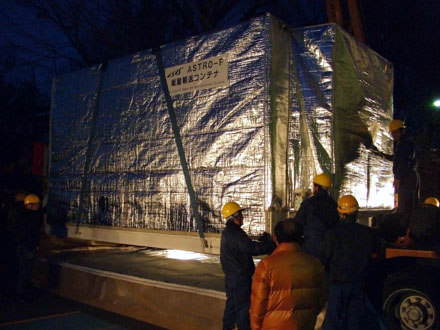
Photo 1: The ASTRO-F spacecraft stored in a container putting on the trailer for shipping.
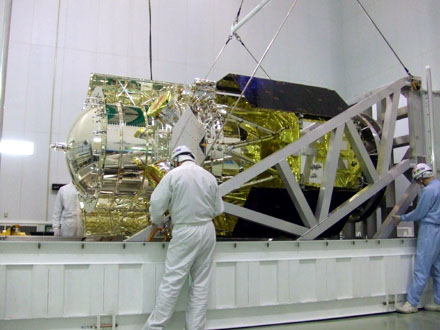
Photo 2: The ASTRO-F spacecraft taking out from the container.
Completion of Thermal Vacuum Test (November 2005)
ASTRO-F cleared the last hurdle of integration tests when the thermal vacuum test was successfully and safely completed. The Test began on the 1st of October and continued 24 hours a day until the 16th.
In the thermal vacuum test, the function of each component of the satellite was verified to operate correctly whilst maintaining the temperature corresponding to the severe environment of the vacuum of outer space. The assembled satellite was inserted into an enormous vacuum chamber, and the walls of the chamber were cooled with liquid Nitrogen after evacuation. A heater was placed beside the satellite to reproduce the same environment that the satellite components will endure in space.
It was confirmed that the temperature of the spacecraft body was controlled as expected and the equipment operated normally in this environment. This was also the last test to check the scientific instruments. Several problems that were pointed out during this test will be reflected in the final adjustments before the launch.
With the completion of this test, ASTRO-F moves one step closer to launch.
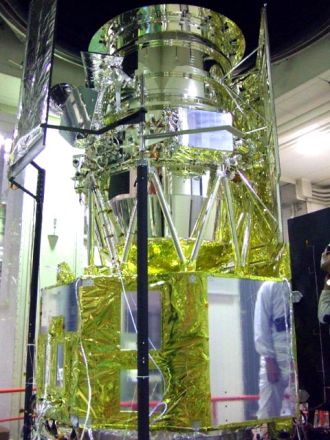
Photo 1: ASTRO-F spacecraft being taken out from the vacuum chamber after the Thermal Vacuum Test. Wires for thermometers and heaters are seen.
ASTRO-F Open Time (November 2005)
A portion of the ASTRO-F pointed observation opportunities has been made available to the wider astronomical community outside the ASTRO-F project team for open time proposals.
Observation opportunities with ASTRO-F have been announced to scientists in Japan/Korea and ESA member state countries. This announcement for open time was made on September 20th and will close on November 18th 6:00 (UT).
This observation time opportunity in the so called Phase 2 of the mission. Twenty per cent of pointed observations have been reserved for Japanese and Korean open time as well as ten per cent for European astronomers.
All the information for the open time opportunities can be found on the observers web page.
We held Open Time Proposal Preparation Workshops in four countries, namely in the U.K., Spain (ESAC/ESA), Korea, and Japan. There were 20-50 participants at every meeting and the general atmosphere was enthusiastic.
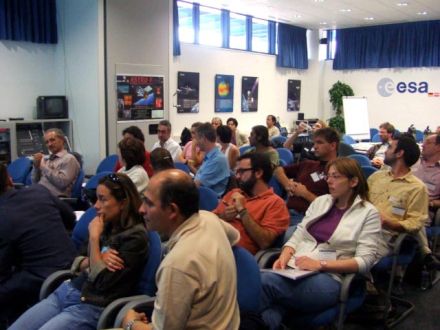
Photo 2: ASTRO-F Workshop at ESA European Space Astronomy Centre in Spain.
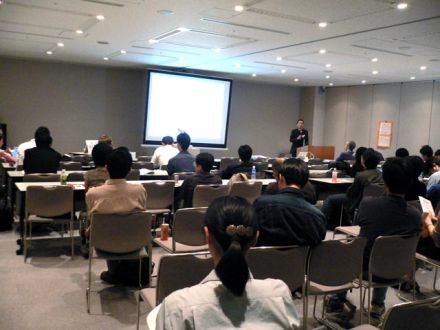
Photo 3: ASTRO-F Workshop at Annual Meeting of the Astronomical Society of Japan in Sapporo.
ASTRO-F satellite checkout is going well (July 2005)
ASTRO-F satellite is under the final integration test since March, and things are going well so far.
In May we had carried out a full configuration vibration test and confirmed that all system functions perfectly. Special attention was paid to the telescope system which had trouble two years ago. We opened the aperture lid of the cryostat (a capsule to keep the telescope and scientific instruments in vacuum and low-temperature) and checked the optical axis of the telescope. The same measurement was made in last October immediately after the installation of the telescope. Comparison of two measurements assured that there is no effective change of the axis; i.e. the telescope is tough enough against the vibration at the launch.
The aperture was closed again (this was the last chance for us to see the instruments on ground), and prepared for the cryogenic tests.
In parallel, the satellite bus module experienced "baking" process. It was installed in the space chamber, then warmed up to about 50 C in vacuum. This process removes unnecessary "out gas" from the parts of the satellite which might contaminate the instruments in orbit. After about one week baking the bus module was safely back in the clean room. Note that the cryostat and scientific instruments have been baked already and did not participate this time.
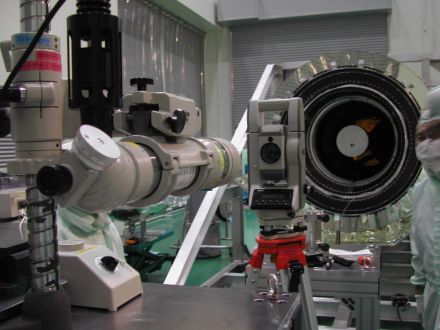
Photo 1: Optical axis measurement of the telescope (seen in the right).
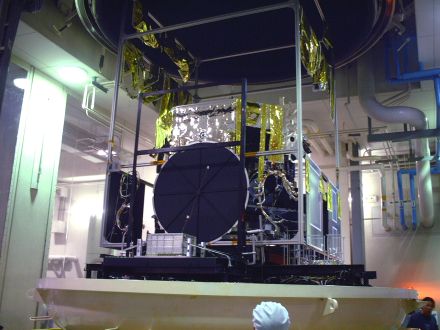
Photo 2: The satellite bus module was installed in the space chamber for the baking. The satellite was mounted on the stage which moving up into the chamber.
Tests of the instruments in flight configuration (January 2005)
The cryogenic test of the ASTRO-F scientific instruments, cryogenic system, telescope and the insturments was carried out from November 30th - December 8th at the Sumitomo Heavy Industries plant in Niihama. This is the first test since they were assembled in the flight configuration in last August. The cryogenic system performed correctly and the instruments inside cooled to the expected temperature. Every instrument functioned correctly and a lot of data was taken. This data will be analyzed and subsequently used to estimate the final pre-launch performances.
Then, the instruments were brought back to ISAS and a cryogenic vibration test was carried out. There was no change in the system before or after the test, and it was confirmed that the instruments will be able to withstand the launch conditions.
With the success of the present tests, the instrument development has conquered a significant mountain in the development of the ASTRO-F project.
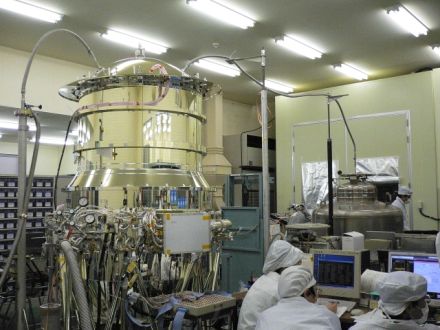
Photo 1: Performance evaluation test. The cryostat lid was cooled with liquid Helium during this test.
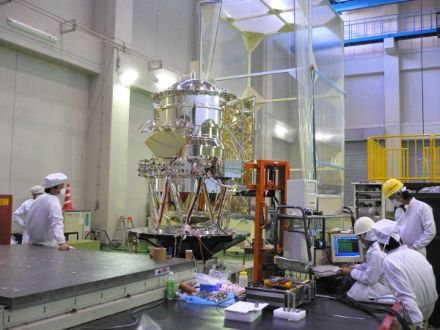
Photo 2: ASTRO-F telescope in the vibration test.
Telescope Alignment Measurement (October 2004)
The first photograph shows a rare and interesting view of the telescope looking down into the aperture of the cryostat (which is usually sealed up until the satellite is in orbit). This picture was taken during the alignment test of the telescope carried out at the Sumitomo Heavy Industries Niihama factory in the first week of October, 2004. As the telescope improvement was successively completed, we need to check whether the telescope will still in good condition after the vibration tests of the cryostat. This will be done by measuring the telescope light axis. To confirm the test procedures and also to obtain the reference data, we carried out this first test. The test was successful. We were able to measure the light axis to an accuracy of 1/200 degree.
The second photo is also a rare view; the focal plane as seen through the telescope. We can see the IRC detectors just below the center, the FIS entrance aperture is on the left. The focal-plane star sensors are seen in the bottom-left and top of the image.
The final check of the telescope axis after the vibration test will be made next spring.
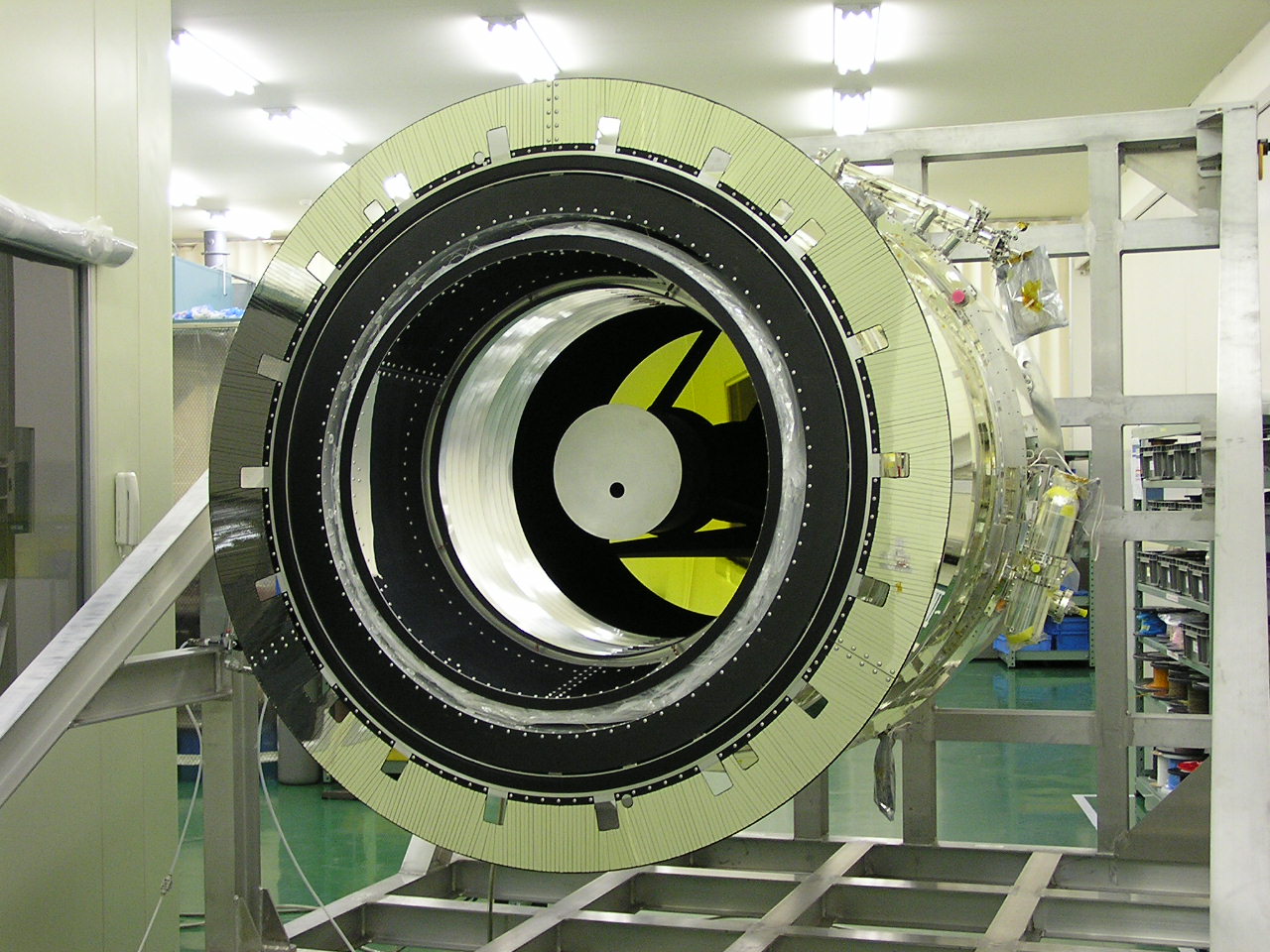
Photo 1: Telescope installed in the cryostat awaiting the measurement.
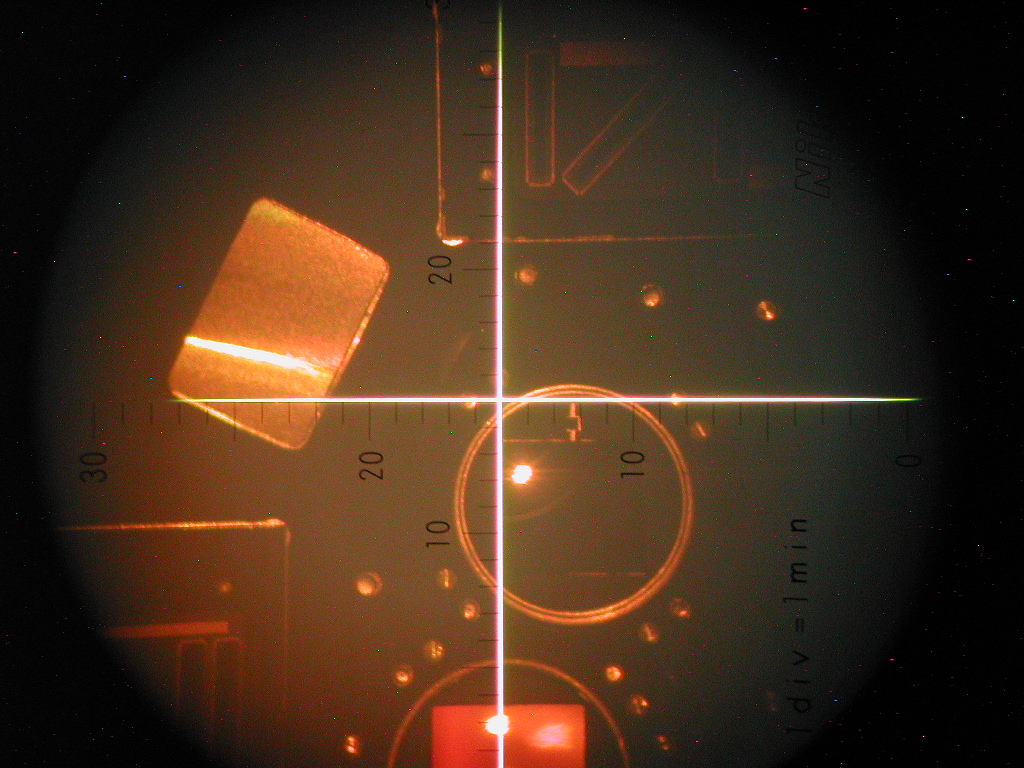
Photo 2: The focal plane as seen through the telescope.
ASTRO-F Telescope Passes Cryogenic Vibration Test (July 2004)
In the final climax of the reparation of the ASTRO-F Telescope, the vibration test under cryogenic temperature was carried out at ISAS between 28th June and the 1st July. Some inspections and measurements were made after the test, and the telescope passed them without difficulty.
Then followed the test to evaluate the performance of the ASTRO-F telescope at the lowest temperatures. In the test, we obtained detailed data on the focus position, etc.
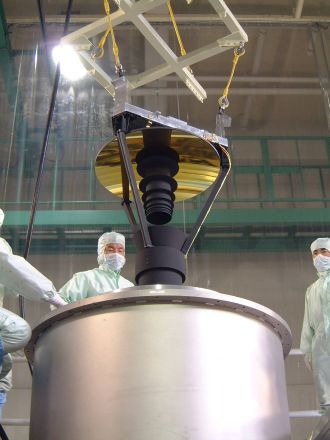
ASTRO-F FPI Integration Test (July 2004)
The final performance evaluation test (FPI integration test) of the two Focal Plane Instruments (FIS, IRC) was carried out from the beginning of June to the 31st of July over three cooling cycles.
From now, the satellite will undergo the final assembly phase and the instruments together with the telescope will be sent to the Sumitomo Heavy Industries (SHI) factory in Niihama where they will be installed into the cryostat. The instruments will not be turned on again until November.
New Flight Model Primary Mirror (March 2004)
In continuing the refurbishment of the ASTRO-F telescope, the polishing of the back-up primary mirror was begun. The grinding was successfully completed at the beginning of March. The new mirror will be used as the new flight model mirror. Correspondingly, the diameter of the mirror has been increased by 2 cm to 69 cm, becoming closer to the original design specification of 70 cm.
Following this, the new mirror will be adhered to the new pads and the telescope will be assembled. Then the telescope will be cooled and the performance under flight conditions measured. This time, drawing on previous experience and by paying attention to minute detail, we will minimize the effects of the thermal distortion.
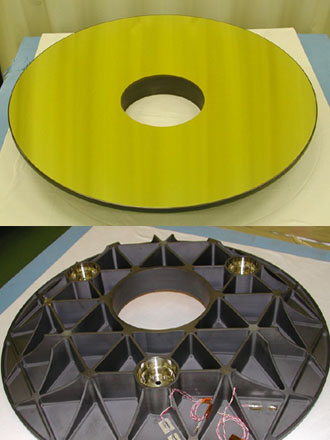 top:surface, bottom:backside
top:surface, bottom:backside
End of Satellite Attitude System Evaluation Test (March 2004)
The second AOCS (Attitude and Orbit Control System) test that was being carried out since the middle of January, finally finished on the 19th March. The main objective of this test was to confirm that the satellite would operate as expected in the case of a Summer launch. Furthermore, the detailed AOCS performance was also evaluated. It was confirmed that even if the launch date changed that the AOCS could work correctly both in the launch operation and regular operation. The data will be analyzed in detail and reviewed around May.
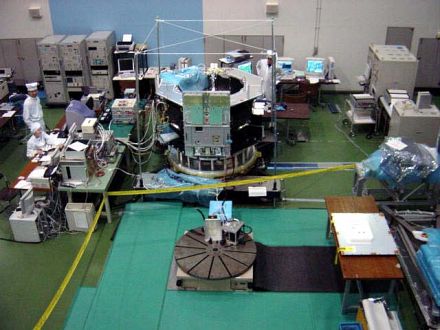
The first period of the integration test has been finished (November 2003)
Since April 2003 we have been carrying out the final integration test of the ASTRO-F satellite. The satellite was built up into the flight configuration, then intensive tests of the individual components, as well as the whole satellite system were performed. In late October we carried out a simulation of the launch and observation operations. However, because of the telescope trouble (found after we started the test) and the subsequent delay of the launch, the test had to be paused after we completed the bus module tests. The first period was finished with the review meeting on the November 7th. The satellite will be preserved in ISAS's clean room. The integration test will be restarted in December 2004, together with the telescope and focal-plane instruments. We will try our best to improve the performance of the instruments as much as possible in this one-year period.
Photo 1: ASTRO-F bus module in the ISAS clean room (Nov. 10).
Photo 2: Review meeting of the ASTRO-F integration test (Nov. 7).
FPI evaluation test in cryostat -FEC#4- (August 2003)
The 4th FPI evaluation test in cryostat (FEC#4) was carried out at Sumitomo Heavy Industries, Ltd.(SHI) in Niihama city. The principal purpose of the test was to evaluate the performance of the focal plane instruments (FPIs).
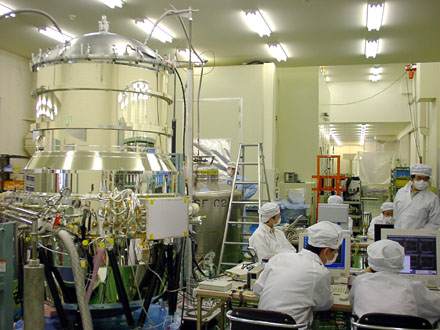
MP4 Symposium (June 9-11, 2003)
The main observation plans of ASTRO-F are arranged as mission programs (MPs) before the launch by concerned scientists around the world. The fourth symposium to discuss the MPs was held at ISAS (Institute of Space and Astronautical Science) in June 2003.
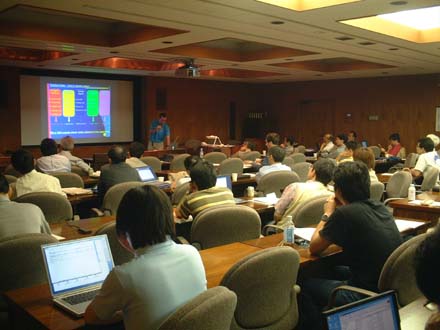
ASTRO-F final integration test (April 2003)
The final integration test of ASTRO-F has begun. Photo shows the satellite bus module of ASTRO-F which was assembled in a clean room at ISAS. The solar battery paddle around the module will be extended in space.
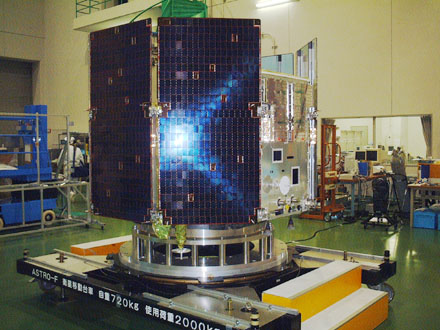
Mechanical interface check with the rocket (March 2003)
The mechanical interface between the ASTRO-F satellite and the M-V-6 rocket was confirmed at Tomioka Factory of IHI Aerospace.
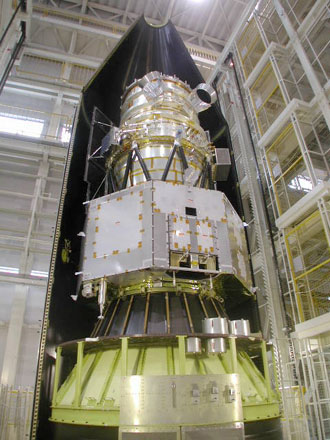
Data reduction meeting in the UK (January 22-23, 2003)
A meeting of the ASTRO-F data reduction team was held at University of Sussex in the UK. Scientists from Japan, Korea, UK, and the Netherlands discussed many topics on data reduction.
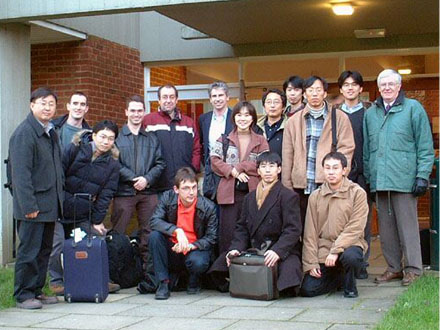
Meeting with ESA member (November 26-29, 2002)
Drs. Salama, Gry, and Garcia-Lario of ESA/ISO data centre have visited ISAS. ESA has been involved in the ASTRO-F collaborator. We discussed user support for European astronomers and the pointing reconstruction during the survey observation.

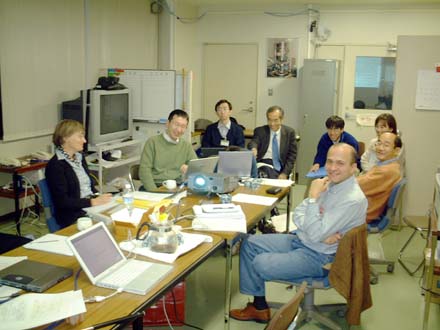
FPIs have returned to ISAS (September 2002)
The Focal Plane Instruments (FPIs) which was installed into the satellite came back to ISAS after the 1st integration test. Improvement and tune-up of the instruments will continue until next year.
